How to Start an Ecommerce Business in 9 Steps (2024)
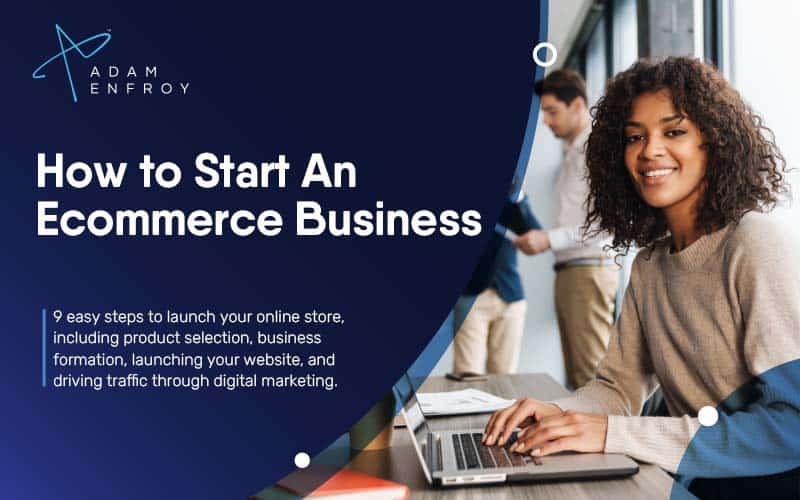
In this beginner’s guide, we’re going to cover how to set up and launch a thriving ecommerce business.
We’ll touch on everything you need to start your own successful ecommerce business, including:
- How to research products to sell online.
- Choosing your ecommerce business model.
- Validating your product idea.
- Registering and incorporating your company.
- How to source your own products.
- Creating a business plan.
- Considering whether you need a traditional ecommerce platform or a B2B ecommerce platform.
- Launching your store.
- Driving traffic to your ecommerce business.
- Generating sales and measuring results.
Considering that 1 out of 3 workers isn’t confident they’ll have enough money to be comfortable in retirement, having your own eCommerce business is definitely a good option.
By the time you’re done reading, you’ll know what it takes upfront to launch and run a successful online store.
Let’s get started.
How to Start an Ecommerce Business (Step-By-Step Guide)
- 1. Research products to sell online.
- 2. Choose your ecommerce business model.
- 3. Validate your product idea and hone in on your target market.
- 4. Create your business structure and register your company.
- 5. How to source and manufacture products for your ecommerce store.
- 6. Create your ecommerce business plan.
- 7. Build your ecommerce store.
- 8. Driving traffic to your online store.
- 9. Measuring ecommerce success.
1. Research products to sell online.
To be successful, you need to sell one of two types of merchandise:
- A high-demand product in a growing niche.
- A high-quality commoditized product.
Niche Products
Niche products serve a very specific consumer base. Instead of a hundred different product lines, you choose one high-quality item — perhaps with multiple variants — and develop a targeted marketing strategy. Because they’re exclusive and desirable, niche products tend to be price inelastic and usually have quite high-profit margins.
Niche products can be one-of-a-kind (a crocheted shawl or a piece of hand-thrown pottery) or small-batch (handmade leather bags, seasonal preserves).
They can also be single-product ventures like Larq, for example, which only makes self-cleaning water bottles (and a limited number of accessories). Larq’s customers are incredibly passionate, and they’re willing to pay more than average for a good-quality product.
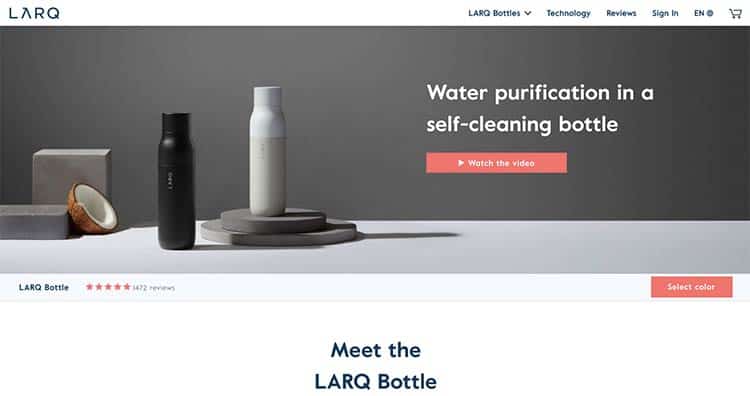
Commoditized Products
Commoditized products are high-demand or essential digital or physical products with a broad existing consumer base. In short, they’re things everyone needs. Across the board, commoditized products make up the majority of B2C ecommerce sales. They’re common, and competition is fierce, so e-tailers frequently adjust prices to stay ahead of industry rivals.
All types of products are commoditized: chargers, saucepans, sneakers, software programs, clothes, kids’ toys — you name it. Interestingly, commoditization usually begins with a genuinely innovative product, which becomes popular; other companies start imitating the original product and establish rivalries. Footwear company Hush Puppies and technology company Fujitsu are two businesses in the commoditized product market.
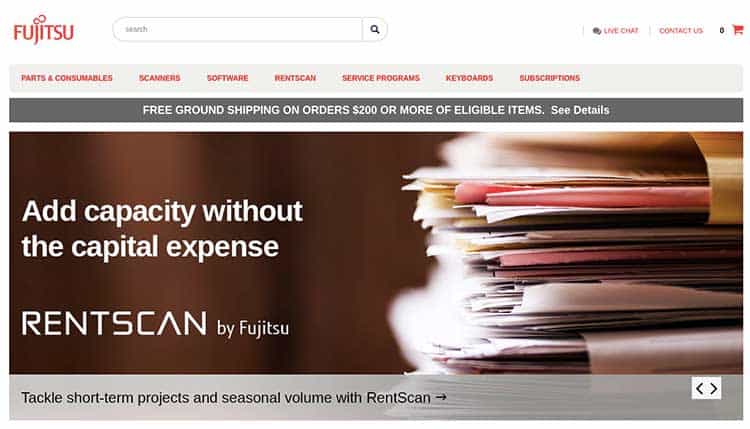
Many successful ecommerce start-ups sell a mixture of niche and commoditized products. Their niche products make them stand out, while the handpicked commoditized products add volume to their e-commerce stores.
Take Berlin Packaging, for instance. Its niche service is custom packaging design, and it also sells a range of standard packaging products.
How to Choose Your Products
Maybe you already have a completely unique idea — maybe you’re an inventor or a designer with a working product prototype. If so, great. If not, don’t worry; you don’t have to come up with the next big thing to start a successful ecommerce store.
Instead of worrying about breakthrough innovation, think about what customers want and consider what you can offer them.
The following tips can help you come up with a solid niche product idea to sell online:
- Every problem has a solution: Innovation often starts at home. Can you create marketable solutions (products or services) to solve problems you encounter regularly?
- Find your passion: You’re about to put a lot of time and effort into your new e commerce business, so you need to ensure it’s based on something you can stay interested in.
- Figure out branding potential: Branding is vital in ecommerce. How will you brand your product? Who will your target audience be, and how will you create fellowship with them through various ecommerce stores?
- Guilty pleasures are a-go: People spend a lot of money on things they love. If you can tap into consumers’ passions — or vices — with a strong product, you’ll almost certainly build a customer base.
- Keep an eye out for opportunity: The most successful entrepreneurs constantly look for gaps in the market. Pay attention to societal shifts, and you’ll see consumer trends before they ever materialize. You might even help them manifest themselves.
- Get on the trend train early: Speaking of trends — if you do notice an appealing product trend, get on board with it early. The earlier you segue into an emerging market, the more likely you are to be seen as an original part of the industry. “Authentic” brands get a bigger slice of the industry pie.
- Spot niche markets: We mentioned Larq earlier because it’s such a good example of a niche idea. Larq identified a problem (unhygienic water bottles) and came up with a ecommerce solution (a rechargeable sanitizing water bottle). Larq raised millions of dollars in venture capital before ever producing a single production run. Ah, the power of the niche.
Hopefully, you’ll have a product or service shortlist by the time you finish brainstorming. If so, try to identify the main competitors for each product. If you find yourself in the middle of an overcrowded field, move on to the next idea — and the next — until you find a less cramped niche. Then, decide which product you want to go with.
2. Choose your ecommerce business model.
You know what you want to sell — now you need to figure out where to sell it. There are four main business models in ecommerce: business to consumer, business to business, consumer to business, and consumer to consumer. Let’s look closely at each classification:
Business to Business (B2B)
B2B ecommerce businesses sell products to other businesses. Occasionally, the business buyer is also the end-user (stationery, office technology, or furniture). Most B2B transactions, however, revolve around wholesale stock, components, or raw materials.
Generally speaking, B2B ecommerce ventures have longer sales cycles. High-stakes deals can take months because complex sales often require committee approval. In return for patience and diplomacy, you get high-value orders and recurring purchases.
Business to Consumer (B2C)
Simply put, B2C is traditional retail ecommerce. Your customers are regular people, and you sell products or services at retail prices. Some B2C companies sell physical products, while others sell computer software or smartphone apps. Still, others sell various kinds of recurring subscriptions.
B2C ecommerce has a short-sales cycle because the stakes aren’t so high. Most transactions involve one consumer rather than the whole of an executive board. B2C businesses generally have lower average order values (AOVs) than B2B businesses, but they make a greater number of sales.
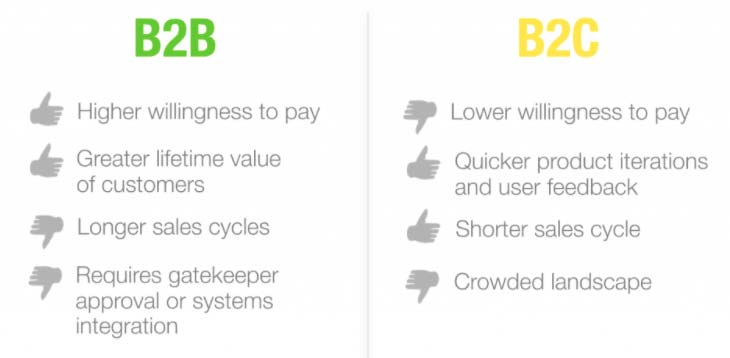
Consumer to Business (C2B)
C2B is slightly obscure, but it’s a genuine business model. In a consumer-to-business situation, consumers sell goods and services directly to businesses. You can see this business model at work on freelancing sites, where companies hire self-employed people to complete various projects.
Consumer to Consumer (C2C)
C2C businesses connect consumers to other consumers. They charge subscriber fees, listing fees, or transaction fees when people sell products or services to other people. Examples include auction companies, like eBay, and online classified sites, like Craigslist.
Business models define the structure of your company; business revenue models bring home the bacon. Also known as value delivery methods, business revenue models determine your approach to inventory management. Here are other popular options:
Direct to Consumer (D2C)
Direct to consumer brands sell goods to consumers without going through a middleman. Some of them manufacture their products, while others create a supply chain and outsource the production process. D2C companies maximize profit margins by refusing to sell products wholesale.
Because they communicate with and sell directly to consumers, D2C companies retain a lot of control over the customer experience (CX). As a result, they tend to grow quickly and build loyal fan bases.
Dropshipping
Dropshipping is an interesting ecommerce business model: you sell a selection of products on your site as a retailer while your dropshipping supplier manages the shipping and order fulfillment process. While it doesn’t give you as much control over your branding and customer service, it’s a good way to test out new product ideas while cutting shipping costs and money spent on storing inventory.
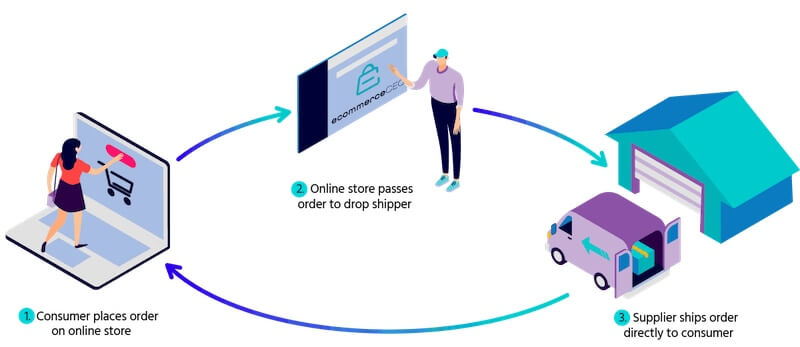
Subscription Services
Subscription services turn one-time customers into repeat customers by offering special pricing on recurring orders: Amazon’s Subscribe and Save feature is one example, and Marquis Wine Club’s monthly wine delivery service is another. Many companies combine subscription services with other business revenue models.

Wholesaling
Wholesalers sell bulk quantities of goods to other businesses at lower-than-retail prices. Their customers either resell those products or use them to create end products or deliver retail services. If you choose a wholesale business model, consider segmenting your target consumer base into large and small companies.
White Label and Private Label
White labeling and private labeling sound similar, but they’re actually quite different business models. In a white label business model, you apply your logo to generic goods from a distributor. In a private label business model, you hire a manufacturer to create a product exclusively for you. Both methods save time, but private labeling is more expensive than white labeling. Either way, you get to spend more energy on marketing and new technology than design and production.
Fulfillment by Amazon (FBA)
Companies that choose Fulfilment by Amazon (FBA) basically transfer responsibility for warehousing and shipping to Amazon. Your bulk goods go to an Amazon fulfillment center, where they’re stored and mailed for you. There are fees involved, but you lose the need for a warehouse, and you don’t have to post any product — plus, Amazon takes responsibility if something goes wrong during the shipping process.
It’s a great way to start selling on Amazon without the need for a full website experience.
3. Validate your product idea and hone in on your target market.
At this stage, performing market research is vital to ensure you have a sound product idea. You’ll also need to create one or more buyer personas to help you build laser-focused marketing strategies later on. Market research isn’t as hard to perform as you might think, and buyer personas are pretty fun to create. Let’s dive right in.
Market Research
You need to hire a specialist company to perform market research. You can, if you like — but it isn’t too difficult to gather information in-house. All you need is a strategy and the right tools. Here are three of the most effective ways to find out more about your consumer base:
Conduct Consumer Surveys
Surveys use good old-fashioned questions to harvest information from consumers. One of the quickest ways to build an email list is via social media: set up a page for your new business and offer incentives to people who’ll take your survey (10% off a future purchase, or entry into a prize draw). Paid social media ads can help you target a specific audience and drive traffic to your page.
Several great marketing tools, including SurveyMonkey and QuestionPro, make survey generation easy. Simply sign up, create your first questionnaire, and email it to recipients. Make sure you track the email-open rate and use the metrics you gain from your survey to develop an impression of your consumer base.
Ask yourself what type of information you need from consumers, and craft your questions accordingly.
Here are a few demographic topics to get you started:
- Marital status
- Number of children
- Age
- Gender
- Country of residence
- Household income
- Educational status
Don’t forget to gather psychographic data too. Psychographics provide insights into why consumers make decisions. It is the information about a person’s attitudes, beliefs, and values that help you understand how they view the world.
You can include psychographic survey questions about:
- Musical tastes
- Lifestyle choices
- Aspirations and life goals
- Family values
- Retirement goals
Ask pointed questions about your business idea, and ask participants whether they’d make changes to your products or services.
Interview Consumers
If you can, arrange telephone or Zoom interviews with some of your survey participants. One-on-one interviews can help you answer specific questions in more detail. Don’t leave negative-sounding participants out because they might be able to provide valuable feedback that’ll make your business better.
Email interviewees a list of four or five questions a few days before you talk with them. They’ll provide better answers if you give them time to think, rather than putting them on the spot. Make sure you take as many notes as possible during each conversation.
Create Focus Groups
Focus groups can get messy, but they often generate good ideas. If you have good people skills and want to bring several consumers from your target group together for a brainstorming session, go for it. You can do this in person or via a video chat app, like Zoom or Skype.
Avoiding dominance bias: Dominant characters tend to unbalance focus groups, leading to skewed ideas, so include an impartial and diplomatic moderator in the conversation.
Create Buyer Personas
You’ve gathered information via surveys, interviews, and a focus group. Now it’s time to weave all that data into a “real” person — or people. Buyer personas make marketing easier because they give you “dream customers” to focus on.
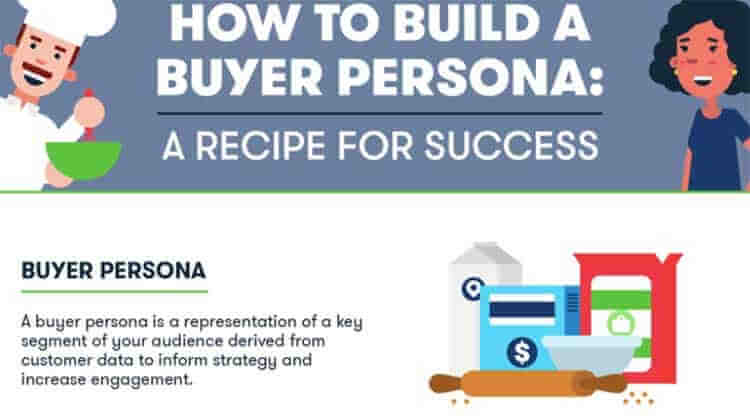
To get started building a buyer persona:
- Give each profile a nickname — “Gary the Banker” or “Lucy the Interior Designer,” for example.
- Attach a photograph to make your persona more relatable.
- Add a set of demographics to each profile.
- Enrich each persona with psychographic tidbits.
Let’s pretend you sell a range of bespoke outdoor goods — camping equipment, innovative American-made tents, and so forth.
Your buyer profiles might look something like this:
- “Gary the Banker” is Gary Brown, a 30-year-old unmarried homeowner. Originally from Denver, Gary now lives in Colorado but wants to retire in Vermont one day. He has a college degree, works as a mortgage consultant at a major bank, and earns in the region of $35,000 a year. In his spare time, he loves skiing and climbing mountains with friends. He’d rather save up for good-quality gear than spend frugally on cheap equipment because he wants his kit to last for years.
- “Lucy the Interior Designer” is a 54-year-old married mother of three teenage children. Her husband is a cosmetic surgeon. She lives in southern California and works with an exclusive set of very wealthy clients, so she brings in about $210,000 per year. Every summer, she and her husband and children go on an extended camping trip, preferably to a foreign country. She wants the newest and best equipment and doesn’t mind spending as much as it takes to achieve her aims.
You can make your buyer persona (or personas) as simple or complex as you want — but keep them relevant and tactical.
4. Create your business structure and register your company.
To get started in earnest, you need to pick a business structure and register your business. If you’re a freelancer trading under your own name, you can sign up as a sole proprietor; otherwise, you’ll most likely register your ecommerce company as a partnership, an LLC, or an S corporation.
In fact, the best LLC services will give you the right advice on your specific needs and can guide you when making decisions that will affect your business both in the short and long term. Understanding how personal and business finances will affect your company is important and you should ask questions to be clear on this when setting up your company.
Sole Proprietorship
This type of business structure is ideal for self-employed people who don’t want to (or aren’t ready to) register as an LLC. It’s a straightforward process in most parts of the country. In many states, you don’t have to register your freelance business unless you operate under a pseudonym. Five states — Oregon, Alaska, Montana, Delaware, and New Hampshire — don’t have statewide sales taxes. In most other states, you pay sales and use taxes quarterly.
The setup might be simple, but there are a couple of major drawbacks to sole trader status. Firstly, if your company goes bust, your personal assets aren’t protected under the terms of a sole proprietorship. Secondly, you’ll be subject to self-employment tax, which increases as your earnings go up. The way out of both issues? Pick a different business structure.
Here’s more information on the differences between a sole proprietorship and an LLC.
Limited Liability Company (LLC)
When you register an LLC, you limit your personal liability by separating your own assets and your business’s assets. To get going, appoint a registered agent — the person who’ll represent the LLC — and file articles of organization with your home state. You’ll need to pay a fee, but it won’t come to more than a few hundred dollars.
As the owner (also known as a member) of an LLC, you can manage your own company or hire staff to do the work for you. You’ll need to get an Employer Identification Number (an EID, also known as a Federal Tax Identification Number, or FTIN) from the IRS before hiring employees.
You don’t have to file a tax return specifically for your LLC; instead, its profits travel through the company to you, and you pay self-employment taxes on all of your profits.
If your company hits the big-time and you begin to earn a lot, you can elect to pay taxes as an S corporation instead. At that stage, you can allocate yourself a “reasonable” salary and avoid any taxes on profits over that amount.
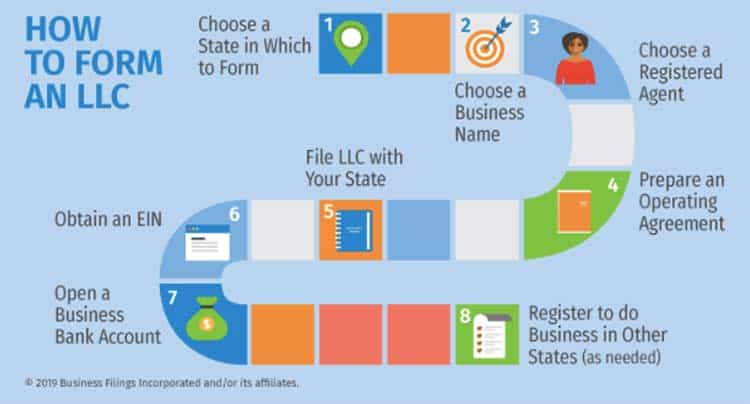
Limited Liability Partnership (LLP)
You can create an LLP just as easily as an LLC, but there are a few differences between the two business models. An LLC can have one or more members; an LLP has to have at least two members. Unlike LLCs, LLPs have to define at least one partner member who will take legal responsibility for the partnership’s actions. Silent partners and investors in an LLP are not personally liable if the company goes bust, gets into business debt, or gets sued.
Small business owners usually register as LLCs; professional partnerships — law firms and accounting firms, for example — go for LLP status. In many states, LLCs and LLPs both have to produce annual reports. Like LLCs, LLPs function as pass-through organizations for tax purposes.
Corporation
You don’t have to bring in millions of dollars a year to incorporate your company. With that said, nearly all very large publicly traded businesses are corporations. Two corporate structures exist:
The C Corporation
All businesses that incorporate are automatically C corporations unless they apply for S corporation status with the IRS. Like LLCs, C corp owners have limited liability, so they’re not held responsible for business losses. If you need to raise significant capital, you can take your business public and sell corporate stocks and bonds to investors. On the flip side, you’re taxed twice: once on your own salary and again on company profits.
The S Corporation
To create an S corp, you first need to form a C corp and then apply to the IRS for S corp taxation status. Like LLCs, many S corporations act as pass-through organizations.
Owners pay themselves salaries and pay income taxes on those earnings, but then don’t have to pay taxes on their remaining profits. S corporations can’t have more than 100 shareholders, so if you decide to go public later on, you’ll need to convert your S corp to a C corp.
You’ll almost certainly spend more on accounting services after you incorporate your company. Corporations have to issue regular financial statements and tax season is quite a bit more complex if you decide to register your business as a corporation, so you’ll almost certainly spend more on accounting services every year.
Obtain Appropriate Business Licenses
If you plan to do business as an LLC, an LLP, or a corporation — basically anything but a sole trader operating under your own name — you’ll probably need some type of business license. I
f you run a dropshipping business from home under an assumed name, you’ll have to get a DBA license and a sales tax license, for example. Business licensing and permitting requirements vary from state to state, so it’s important to check if you fall into any of the categories in your jurisdiction.
Branding Your Company
Visual branding is a complex topic worthy of its own 2,000-word article, but we’ll go over it in a nutshell form here. To make your company memorable and create brand awareness, you need to come up with a logo and complementary branding colors that stay the same across all of your sales channels.
You can design a logo yourself, or you can use a freelance designer to get a professional result.
In either case, consider the following when branding your company:
- Relevance: Your logo should be purposeful; it should instantly tell customers what your brand offers.
- Simplicity: Don’t get too clever or complex — customers need to be able to remember your logo.
- Versatility: You need a logo you can use on your site or on a billboard. It has to scale up and down without losing integrity or meaning.
- Uniqueness: Your logo has to be unique enough that consumers associate it with your business.
The best logos in the world are unmistakable, even when you take all peripheral text away; even toddlers recognize McDonald’s Golden Arches — sometimes from half a mile away. High-performance camping equipment retailer Sierra Designs has a simple, memorable logo, and it works with or without the adjacent logotype.
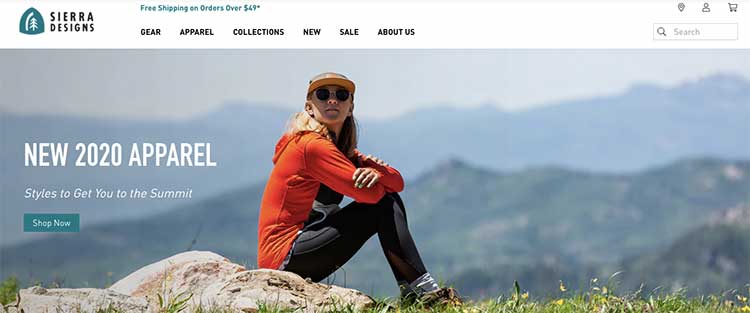
Once you have a logo you’re happy with, use its colors to influence the rest of your visual branding, including your site design, packaging materials, marketing emails, and ads.
5. How to source and manufacture products for your ecommerce store.
It’s time to get a little more specific about the product sourcing methods we wrote about in the business models section. There are three main ways to source products: DIY production, wholesaler or manufacturer, and dropshipping. Many online retailers combine methods to achieve a balanced income stream.
DIY Products or Services
People have been making and selling things for thousands of years. Neolithic traders had to travel overland to sell beads, pottery, and sculptures; nowadays, you can sell handmade items globally via the internet.
Startup costs for a DIY tend to be low, but you put in a lot of your own time to make up for it. On the other hand, you have full control over the production process and the UX, and you can tweak designs on the spot if products don’t perform optimally.
As you scale your business, you might decide to form an alliance with a manufacturing company to create products en masse.
If you choose the DIY route, remember to:
- Arrange a reliable supply chain for source materials.
- Determine mailing options in advance; will you hire a shipper or send items yourself?
- Figure out your production timeline.
- Think about where you’ll store your inventory.
Wholesaler or Manufacturer
If you’re ready to make and ship products on a larger scale, consider using a wholesaler or a manufacturer as a product source. Let’s look at both options in a little more detail:
Wholesalers
Wholesalers sell brand-name goods in bulk. They also sell white-label products in bulk. You apply your branding and resell generic merchandise to your customers.
If you’d rather concentrate on the marketing and scaling your business rather than product development, you can save time and money with a wholesaler.
Manufacturer
If you have a product prototype or you want to scale up your DIY business, you can partner with a manufacturer. Production companies in the U.S. and overseas create private-label goods in bulk for their customers.
Some manufacturers help entrepreneurs create new products and manage the development process from start to finish.
If you decide to work with a wholesaler or a manufacturer, consider the following:
- Read company references. If the manufacturer is based in the U.S. or Canada, check its better business Bureau rating and any associated reviews.
- Get a production cost estimate.
- Ask about minimum order quantities.
- Obtain a manufacturing time estimate.
- Go over bulk freight options.
- Examine contracts carefully.
- Inquire about guarantees and after-sales support.
Dropshipping
If you don’t have a unique product idea and you’d rather not work with a manufacturer or store merchandise in bulk, dropshipping might be your best product sourcing solution.
When you partner with a dropshipping supplier, you become a retail distributor. You list the wholesaler’s merchandise on your site, and the vendor creates products and ships orders on your behalf.
Dropshipping has a lower profit margin than white-label or private-label reselling, but it’s a quick and easy business model. Some companies combine dropshipping with DIY. For example, an artist who sells and ships one-of-a-kind paintings from home might also sell reproductions and branded mugs via a dropshipper.
6. Create your ecommerce business plan.
Take some time to think about the future before you jump in at the deep end. Roughly 50% of new businesses fail within five years, often because they don’t plan ahead.
Writing a business plan can give you a deeper understanding of your unique offering and help you:
- Find the resources you need to run your business.
- Figure out what your competitors are up to.
- Spot opportunities in the marketplace.
- Identify your target market.
- Visualize your company’s future.
Business plans usually have at least seven sections. You can use the following blueprint to create a strategy of your own:
Executive Summary
An executive summary condenses your business idea into a few paragraphs. It sits at the front of your business plan and tells readers about:
- What your company does.
- Your business goals.
- The products or services you sell.
- Your target market.
- Your sales channels.
- Your monetization strategy.
You’ll almost certainly write your executive summary last. Doing so will give you the chance to digest every other part of your business plan before providing a recap.
Company Overview
Here’s where you provide readers with a really thorough company overview. This section begins with your business name before moving on to its business structure (LLC, S-corp, etc.) and domain name.
After that, you’ll write a brief mission statement, and then you’ll clarify your vision for the company. Write some background information about your business idea and unique value proposition, then wrap it up with a list of major competitors.
Market Analysis
You get to show off what you know about your target consumer base in the market analysis section. Many company owners begin with the results of a SWOT (strengths, weaknesses, opportunities, and threats) analysis. Then, they move on to competitive analysis.
Competitive analyses help you understand your competitors so you can gain ground in the marketplace.
They do this by identifying and listing each competitor’s:
- Domain name and amount of website traffic.
- Business model and product features.
- Product pricing strategy.
- Mission statement and vision.
This section concludes with a paragraph detailing how you intend to make your company an industry leader.
You can do this in three main ways:
- Customer segmentation: You’ll offer high-quality products in a trending niche market.
- Cost leadership: Your products are cheaper than those offered by your rivals.
- Differentiation: You offer a unique product or a much better version of a competitor’s product.
Products and Services
This is where you go into detail about your product or service. Tell your readers more about the merchandise you sell or the service you provide; if you sell a lot of different products, write in general terms about your inventory and why your company stands apart from its industry peers.
Marketing Plan
In this section, you’ll tell readers about your marketing strategies. The segment begins with a breakdown of your marketing budget and continues with a list of the marketing channels you intend to use to promote your business. Marketing channels fall into two main categories:
- Organic Marketing Channels: Search engine optimization (SEO) tactics, content marketing, social media pages, and blogger networks drive organic traffic to your website. Organic marketing channels are inexpensive, build value over time, and help you elevate your brand name.
- Paid Marketing Channels: Paid marketing channels get results quickly, making them an attractive choice for businesses looking to get off the ground. Pay per click (PPC) ads, social media ads, influencer marketing, and affiliate marketing all cost money, but they produce solid leads.
Operations and Logistics Plan
Your operations and logistics plans cover everything you need to run your company physically. Office space, technological needs, personnel, and warehousing needs all fall into this category.
Don’t forget to include details about:
- Your supply chain.
- Your production plan.
- Shipping and fulfillment options.
- Where you’ll store inventory.
This part of your business plan helps investors understand the everyday expenses associated with your own ecommerce business.
Financial Plan
You’ll need capital to get your ecommerce business going. If you don’t have start-up costs in hand, you’ll need investors or a bank loan to begin trading. You need to convince potential backers and lenders that you can handle money and that you will make your business profitable.
Most financial plans include:
- An income statement: A breakdown of all sources of revenue and all your expenses over a particular time period.
- A balance sheet: A dual list of all your assets and all of your liabilities, culminating in shareholder equity.
- A cash-flow statement: A real-time income and expenses statement, indicating when money comes in and when it goes out.
With the right business plan in hand, you’ll find it much easier to find investors and convince your bank to approve vital business loans.
7. Build your ecommerce store.
You’ve validated your product ideas, registered your company, and written a business plan — now it’s finally time to build your website. Most online retailers and wholesalers choose sales as a service (SaaS) platforms because they’re simple to use and offer website-building tools and ecommerce platforms.
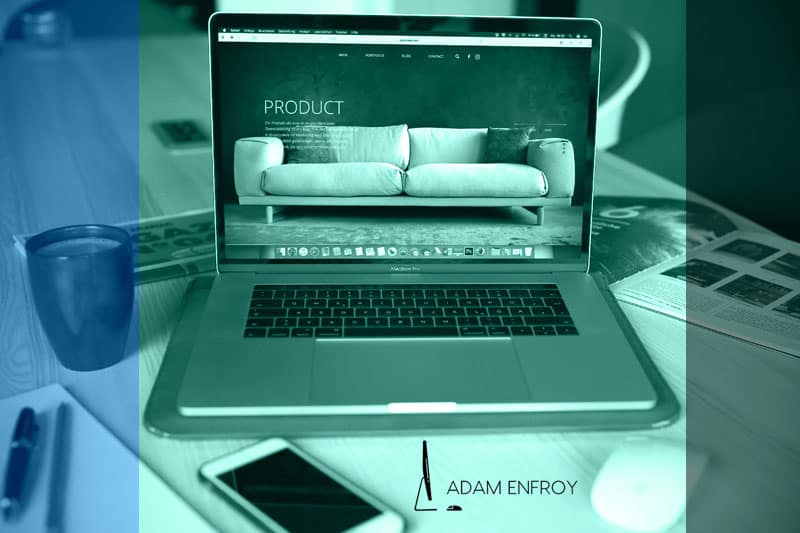
Quite a few SaaS providers exist — and some are better than others. Before choosing one, start with a free trial to test out its features.
Remember to look for the following features when deciding on your ecommerce platform:
- Domain name hosting.
- Exccellent speed and uptime.
- A great in-product website builder.
- Free, user-friendly themes.
- Responsive website design.
- An extensive app store full of reliable plugins.
- Full PCI compliance.
- Built-in SEO tools and fully customizable URLs.
- Promotions, discounts, analytics, and other ecommerce marketing features.
- Customer support via phone, email, and live chat.
- An unlimited product catalog.
- Zero transaction fees and low credit card processing fees.
BigCommerce
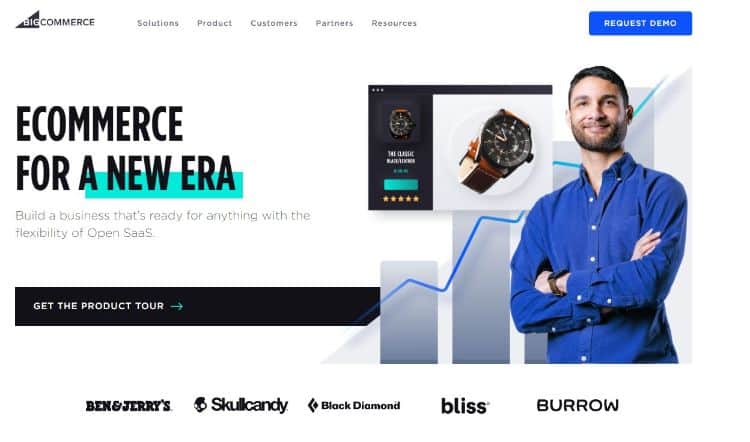
Arguably the best SaaS platform out there, BigCommerce has a range of tiers from Standard to Enterprise. All BigCommerce plans include high-quality themes, a responsive mobile-ready website, multiple sales channels, unlimited storage, unlimited bandwidth, and professional analytics.
If you sign up for the Pro package, you gain access to a number of extra features, including custom SSL, segmentation tools, and abandoned cart saver. BigCommerce’s excellent customer service is another major perk. Scalable and powerful, BigCommerce is great for growing businesses.
If you are a fan of WordPress, they also have a new WordPress plugin called BigCommerce for WordPress that’s a competitor to WooCommerce.
BigCommerce receives my highest recommendation for medium to large businesses and you can get started with a 15-day free trial.
Wix

Very popular with small businesses, Wix has a good range of carefully designed templates, SEO tools, easy to use WYSIWYG editor, plus a number of promotion and gift card options. Website setup is a breeze and you can build a site in under an hour.
Wix comes with an integrated store-builder tool, and you can use its built-in product galleries to arrange merchandise or services in an attractive way. Other features, like a secure checkout, 24/7 customer support, and multiple payment gateways make Wix a good choice for businesses with a limited product catalog.
Shopify
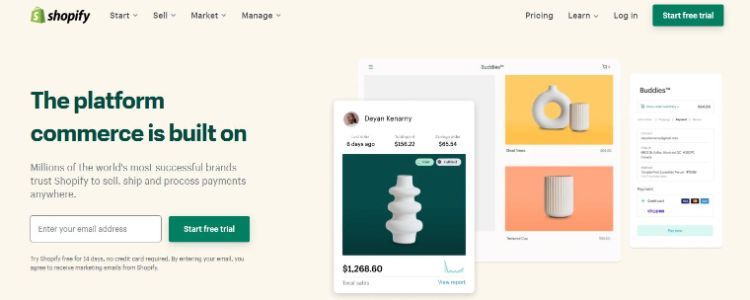
Shopify is an ecommerce giant. Overall, they work best for dropshipping stores because integrations and store setup is fast and easy. A longtime name in ecommerce, Shopify launched in 2004 and became a prominent SaaS provider pretty quickly. Platform perks include abandoned cart recovery, free website SSL, marketing tools, and decent customer service.
Shopify does have a few drawbacks. For starters, you’re limited to 100 product variants, so if you have a large catalog with multiple product options (size, material, color, etc.), Shopify might not be right for you.
SEO is also a slight shortcoming. You can’t create your own custom URL structure and are forced to use the Shopify format.
Overall, they’re a great, easy to use ecommerce website tool best for small sellers and dropshippers.
3dcart
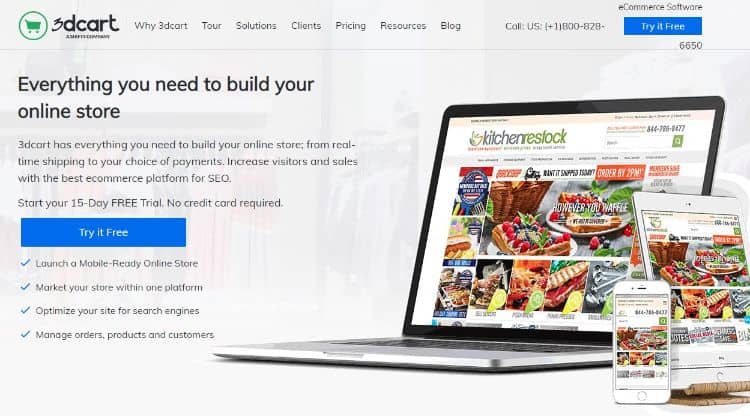
3dcart is best known for its strong SEO features. Other advantages include zero transaction fees, unlimited bandwidth, and a ready-made Facebook store. You can use 3dcart’s promotion manager to create configurable sales, custom discounts, scheduled promotions, coupon codes, and more.
3dcart has a cheaper basic plan than many other SaaS platforms, but like so many things, you get what you pay for. Fewer features, fewer themes, and lack of enterprise functionality make this provider more suited to smaller businesses than mid-size sellers looking to scale.
Volusion
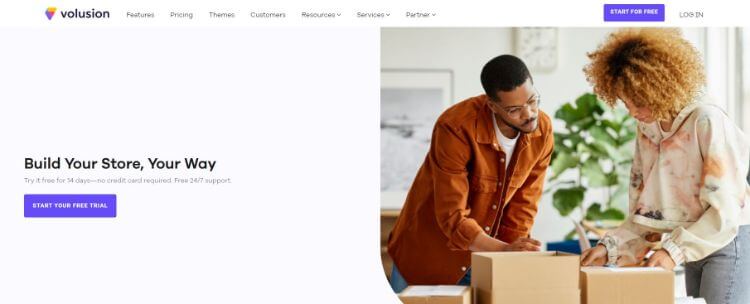
Volusion is a user-friendly ecommerce oldie. Its founder, Kevin Sproles, started his website-building career in 1999 at the age of just 16. He launched Volusion in 2002 at the age of 19. Stable and functional, this robust all-rounder has a great-value $26 per month basic package, which includes online support, unlimited products, and no transaction fees.
The platform’s updated content builder lets you edit article pages from the store’s front end, so if you see anything out of place, you can change it immediately. If you’re not familiar with SEO or marketing, you can use Volusion’s in-house team to help you craft a high-quality commerce strategy.
Volusion has some strong ecommerce features, but I recommend others on this list before them.
Squarespace
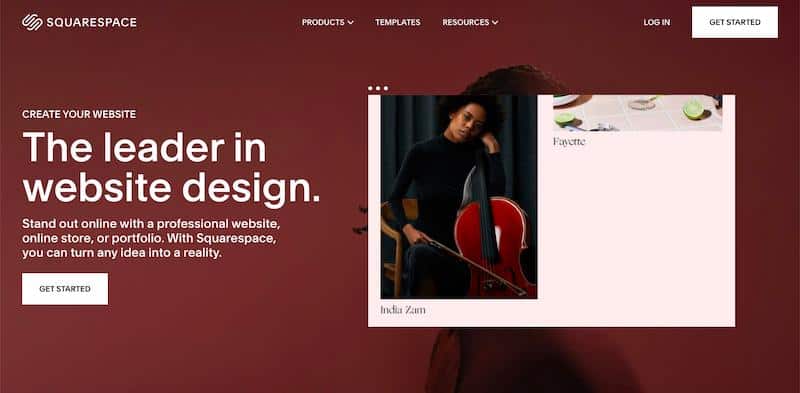
If you’re a visual person with limited ecommerce needs, Squarespace might be your ideal ecommerce provider. It’s not a platform for enterprise-level companies, but it does offer a very user-friendly drag-and-drop website builder.
Squarespace customers gain access to an impressive mobile-friendly template portfolio, product management tools, and a range of third-party shipping and fulfilment apps.
Squarespace has four service tiers, and you’ll have to pick one of the more expensive options to set up an ecommerce store. Squarespace SEO can also be problematic: URLs mimic each other, so certain pages look like duplicate content — and that can really impact your Google ranking.
If you’re selling handmade goods, you can read my full guide to get started selling on Etsy.
Overall, Squarespace is a great website builder, but not the best for e-commerce.
8. Driving traffic to your online store.
Launching an ecommerce site is easy. The challenge comes when you need to drive traffic to it. We’ll cover both paid and free digital marketing tactics to boost your website traffic – and sales.
Organic Marketing Channels
Organic marketing channels take time to build traction, but they create the strongest long-term return on investment (ROI). A few of the best tactics include:
- Search engine optimization (SEO): Relevant keywords included in page text, product descriptions, and other website content boost search engine rankings.
- Content marketing: This includes starting a blog on your site, optimizing blog posts, articles, to drive targeted traffic to your site.
- Social media pages: Active Facebook, Instagram, and Twitter pages encourage new website visits.
- Link building (off-page SEO): It is very hard to get Google traffic without a lot of high-quality, relevant links to your website. These link building strategies include guest blogging and forming link partnerships with other sites in your niche.
- Email marketing: Email is a huge marketing channel for ecommerce businesses. You should choose an email marketing service that lets you create email popups, send abandoned cart emails, create welcome email series (that include discounts), and send targeted, image-rich marketing emails for holiday promotions.
Paid Marketing Channels
Paid marketing channels produce quick results and make it easier to create a profitable online store, so they’re a popular choice for start-ups as well as large-budget businesses. While they provide quick online marketing wins, they typically have a lower ROI than free tactics (excluding affiliate marketing, which has a strong ROI).
Here are some of the top paid acquisition channels for ecommerce brands:
- Affiliate marketing: Bloggers and influencers with popular websites join your company’s affiliate program and are paid affiliate commissions for any sales they help generate via their affiliate links. Choosing the right affiliate marketing niches is key.
- Influencer marketing: Social media influencers on Instagram, Facebook, TikTok, and other platforms promote your products for a fee. (Here are my guides about how to make money on Instagram and TikTok.)
- Pay per click (PPC) advertising: You set up PPC ads with Google and pay each time someone clicks on your ads. This can also include Google Shopping ads, which sync to your product catalog and make your products available on the Google Shopping platform.
- Social media ads: Paid social media ads on Facebook can target new prospects and retarget previous website visitors. One of the best Facebook Ads strategies is to use their DPA ads. These ads appear to Facebook users who visited your product pages and highlight the exact same products they saw on your website. You can also sell directly on Facebook with product listings.
The most effective marketing strategies use a combination of different channels to capture consumers and generate conversions.
If I were to start an ecommerce business from scratch today, I would first create a strong SEO strategy. This includes conducting keyword research around terms that have high search volume and could bring in your target audience.
For example, if you sell camping supplies, you could write a blog post on “The Top 10 Backpacking Tents” and link to your product pages within the content.
Next, you’d want to develop a strong link building strategy and partner with other blogs in your niche to get backlinks. This will increase your website’s Domain Authority (DA) and make it easier to rank all of your pages on search engines.
Finally, I’d use paid advertising carefully, starting with retargeting ads on Facebook. Then I’d move to PPC ads on Google only if you can generate a strong ROI.
9. Measuring ecommerce success.
Ecommerce analytics tools, like Google Analytics, help you understand how visitors reach your site and what they do when they get there. Ultimately, they also provide insight into your conversion rates and sales.
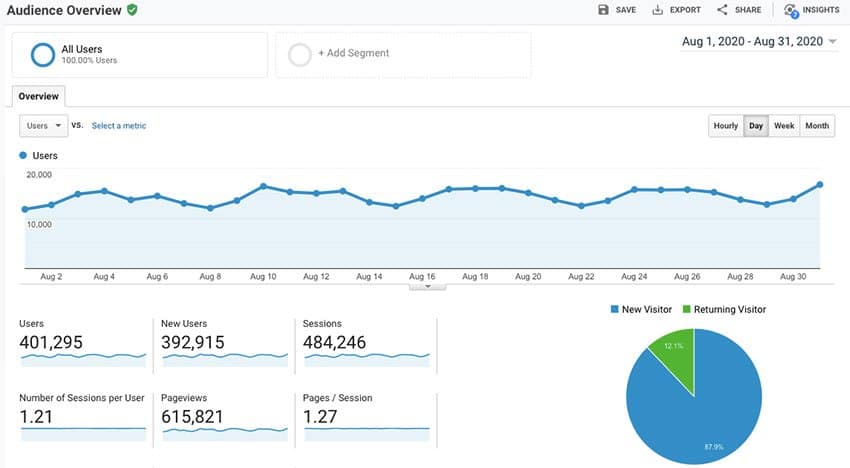
You can use the data you gain from analytics to optimize product descriptions and page content so that more of your visitors turn into potential customers.
SaaS ecommerce platforms, like BigCommerce, support Google Analytics integrations. If you’re a BigCommerce customer, simply set up an account with Google Analytics, then visit the Web Analytics submenu in the Advanced Settings section of your control panel. Check the box next to Google Analytics and paste your tracking ID into the Property ID field to get started.
BigCommerce Google Analytics integration supports Enhanced Ecommerce and Site Search, which lets you evaluate individual page views and search terms.
You can view analytics within Google Analytics (site traffic), Facebook Insights, and your email provider.
Here are some metrics and key performance indicators (KPIs) to pay attention to:
- Sessions: The number of times people see your web content.
- Reach: The total number of people who saw one of your ads.
- Email click-throughs: How many recipients open your emails and click on the included links.
- Social media engagement: How many likes, shares, comments, and clicks you get on each post you create.
- Online shopping cart and checkout abandonment: When shopping online, how many people add products to their carts but then leave your site without beginning — or completing — the checkout process.
- Average order value (AOV): The average total value of one order on your site.
Overall, you need to view and take action on these insights to drive more sales.
Wrap Up.
It takes determination and dedication to set up a successful ecommerce store. You also need a great product in a growing niche, a stellar business plan, the right ecommerce platform, and a well-researched marketing strategy.
This might sound like a lot of work — and it is — but if you break down goals into manageable tasks, you’ll create an ecommerce business you can be proud of.
With the 24/7 availability of online shopping being the number one reason people buy online, setting up your ecommerce store might just be one of the best decisions you can make.
What kind of ecommerce business are you planning to launch? Are there any challenges you’re facing? Let me know in the comments below.
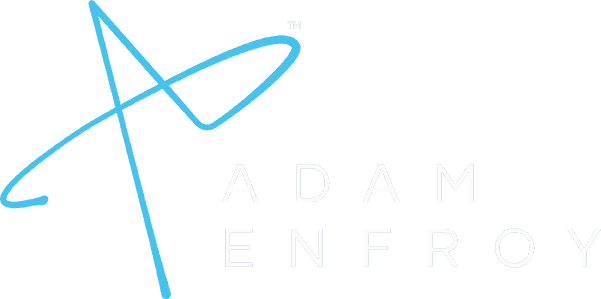

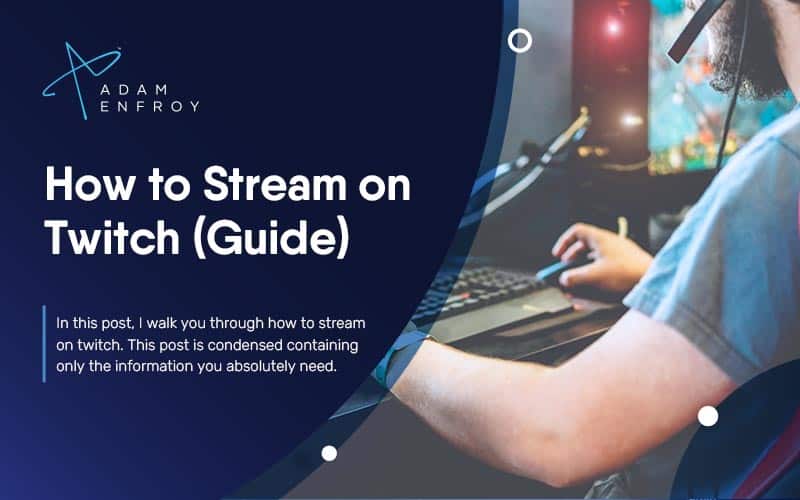

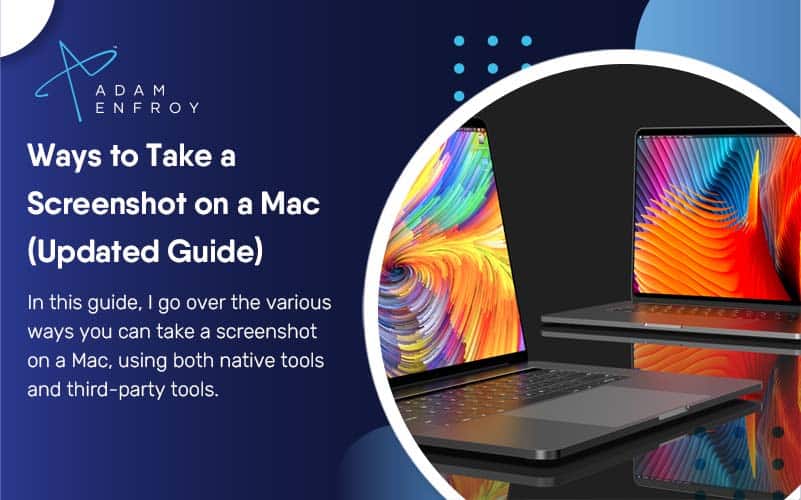
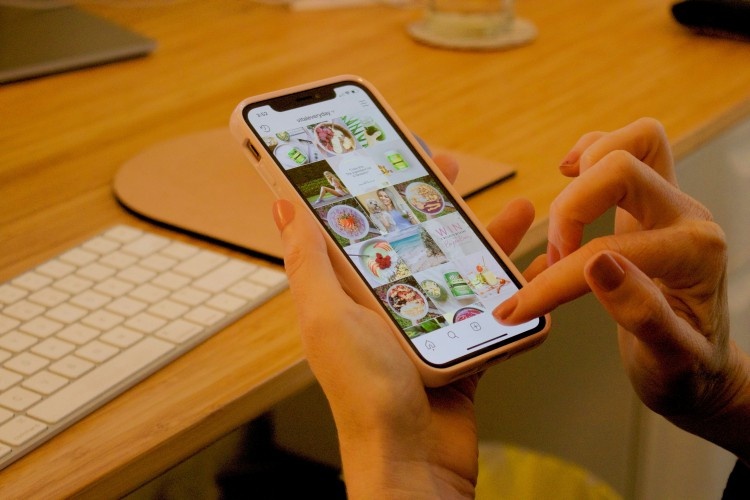
Hey Adam,
Surely an in depth article on the topic. Even the legal aspects of registering an ecommerce store has been explained thoroughly.
I think Shopify, Big Commerce and Wix are best to choose from while creating an ecommerce store.
Thanks for the information!
Fantastic content. This looks like a lot to take in but it is worth every minute of the read.
Every point very vital but I always stress number 1 and number 8 – Select a niche and drive traffic to your business.